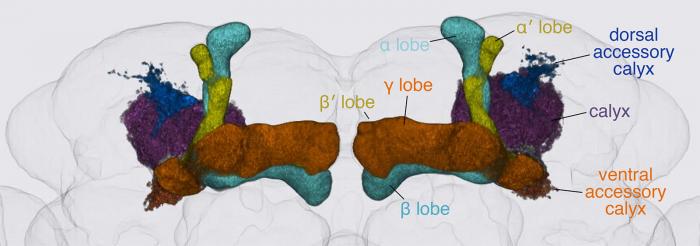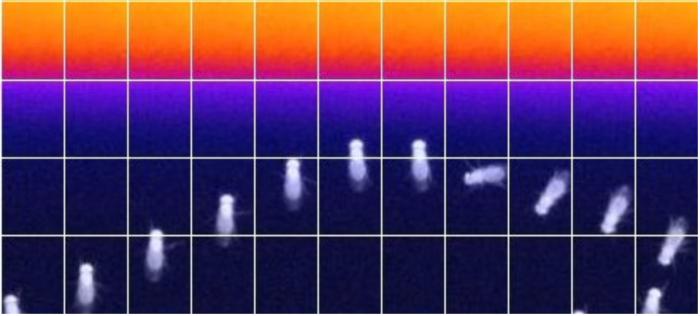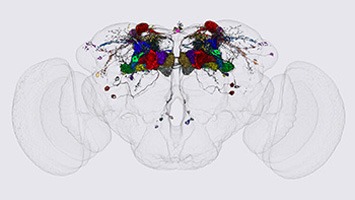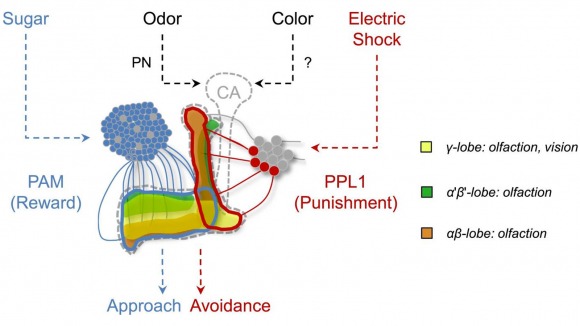The mushroom body (MB) is a center for associative learning and has been implicated in a wide range of fly behaviors including olfactory learning, context generalization, habituation, temperature preference and sleep. The MB is constructed from the major class of intrinsic neurons, Kenyon cells, and approximately 50 other intrinsic and extrinsic cell types. The dendrites and axon bundle of Kenyon cells form the calyx and lobes respectively (see image below). In the calyx, Kenyon cells receive input from the olfactory projection neurons and other sensory inputs. The lobes of the MB are the main output site of Kenyon cells, but also receive many inputs from extrinsic neurons. When we started this project in 2010, as a visitor project with Yoshi Aso from Hiromu Tanimoto's laboratory, the limited ability to manipulate specific cell types made it difficult to address how the MB-circuits process information and drive diverse behaviors. In October 2011, Yoshi joined the Rubin Lab as a postdoctoral fellow and over the past five years we have made considerable progress in developing and applying genetic reagents to facilitate anatomical and functional studies of the MB.
We began by using intersectional strategies to generate cell-type specific drivers and characterizing their anatomy (the video below shows a summary of MB output cell types; this gallery illustrates the on line database for split-GAL4 lines ). The elucidation of the full complement of MB neurons and the details of their projections (Aso et al. 2014a) provided an anatomical substrate from which we can infer a functional logic of olfactory learning and memory. This work, carried out in collaboration with the Axel and Abbott laboratories, provided insight into a problem shared by invertebrate and vertebrate nervous systems: How is meaning imposed on an unstructured ensemble of neurons and how is imposed valence translated into an appropriate behavioral response?
This video shows the morphology of the the individual mushroom body (MB) output cells types, how their dendrites tile the MB lobes, and where their axons terminate in the brain.
We then used those drivers, in collaboration with several laboratories (Aso et al. 2014b), to determine the behavioral consequences of inactivating or activating individual cell types. We focused on the role of 21 cell types of MB output neurons (MBONs) in several associative learning tasks and in sleep regulation, revealing the extent to which information flow is segregated into distinct channels and suggesting possible roles for the multi-layered MBON network. We also demonstrated that optogenetic activation of MBONs can, depending on cell type, induce repulsion or attraction in flies. The behavioral effects of MBON perturbation are combinatorial, suggesting that the MBON ensemble collectively represents valence. This led us to propose that local, stimulus-specific dopaminergic modulation selectively alters the balance within the MBON network for those stimuli. Our results suggest that valence encoded by the MBON ensemble biases memory-based action selection.
Fly with the optogenetic activator CsChrimson expressed in a MB output neuron that conveys negative valence approaching and avoiding the lighted area. The image is a montage of frames from a video recording (see Aso et al. 2014b for details).
We are following up on these initial studies, again in collaboration with a number of other laboratories.
Select Publications
Vogt K, et al
Yamagata N, et al
Liu C, et al






